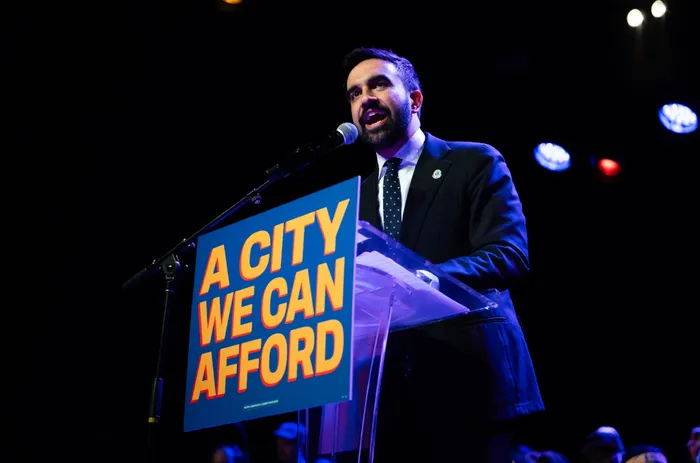
.
Image: Madison Stewart / Zohran Mamdani Website
n the 2025 mayoral race of New York City, Zo Mamdani’s victory stunned political observers. His campaign didn’t just deploy traditional canvassing and TV spots, it turned social media into the engine of a movement.
Here’s how he did it.
Mamdani’s meteoric rise began with his embrace of digital-first tactics. As one profile noted, he went from about 1 % in the polls in February to roughly 56 % by July, a surge attributed in large part to social-media engagement, according to the Times of India.
From TikTok reels to Instagram stories and short-form videos in multiple languages, Mamdani’s team targeted New York’s multicultural electorate.
In one memorable clip, he asked Hindi/Urdu-speaking residents: “Hey! Have you ever voted before?” before explaining ranked-choice voting using mango lassi as a prop,Al Jazeera highigted as a viral video.
His campaign emphasised authenticity, with him walking around Manhattan, talking to voters on bus stops, or running a marathon while discussing rent and transit. His content looked more like streaming video than an campaign advert.
What set this campaign apart is that Mamdani’s team didn’t just post content, they partnered with creators.
They hosted exclusives for creators and “influencers” rather than only relying on mainstream press.
According to Nik A. Ahene in a trade outlet, more than 70 content creators were invited to a campaign “creator briefing” that claimed to reach 77.3 million users across platforms, according to Net Influencer.
One campaign memo revealed the objective: “You are doing the critical work of reaching those who are not yet engaged, those who are disaffected, those who are too busy trying to figure out how to survive to actually engage in the politics.”
The result was rather than simply broadcasting messages to voters, Mamdani’s campaign built co-creation and social-sharing into the plan, where viewers became participants.
New York City is among the most diverse cities globally, and the campaign tapped that.
Mamdani released videos that appeared in Arabic, Urdu/Hindi, Spanish, and included cultural references, such as Bollywood star gestures, and mango-lassi analogies to invite immigrant and multilingual communities into the conversation.
This tactic signalled that his campaign wasn’t just about immigrants and multilingual residents, it was by and for them. That shift helped expand his base beyond traditional progressive voters into harder-to-reach communities.
Mamdani’s campaign suggests a turning point, especially in cities and races where diverse populations and younger voters matter, digital-native campaign strategies aren’t just complimentary, they can be decisive.
His success may prompt rival campaigns, parties and brands to rethink and analysts suggest that the future of political campaigns isn’t about fewer tweets, it's about better narratives, smarter platforms and broader voices.
FAST COMPANY (SA)
